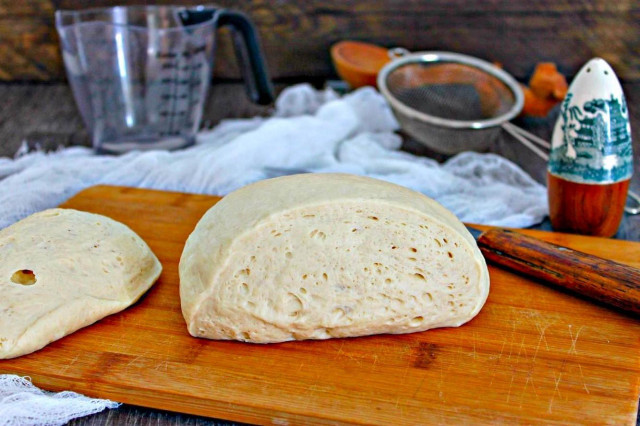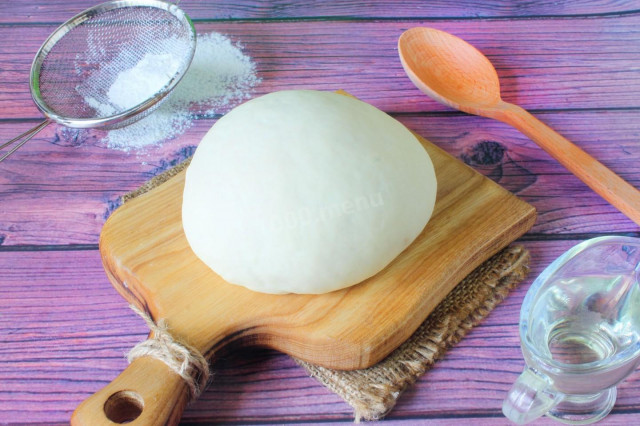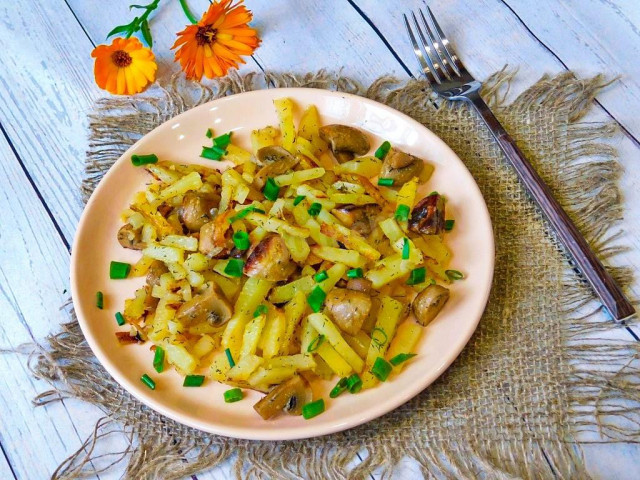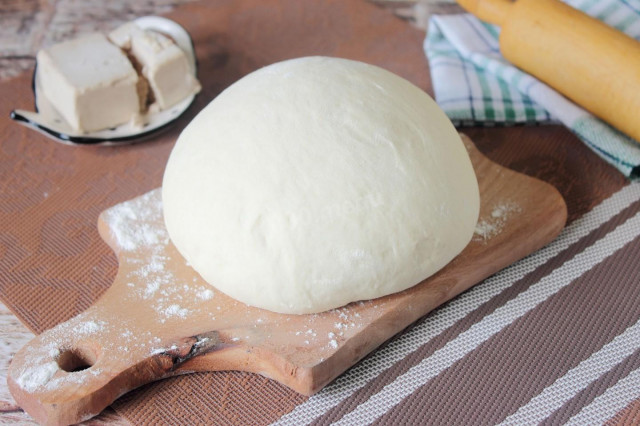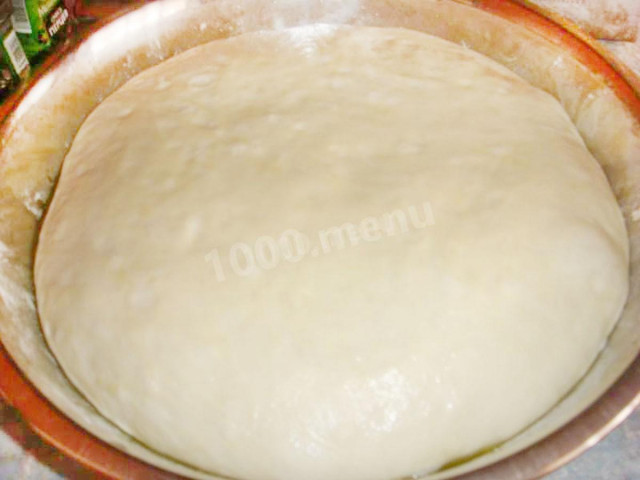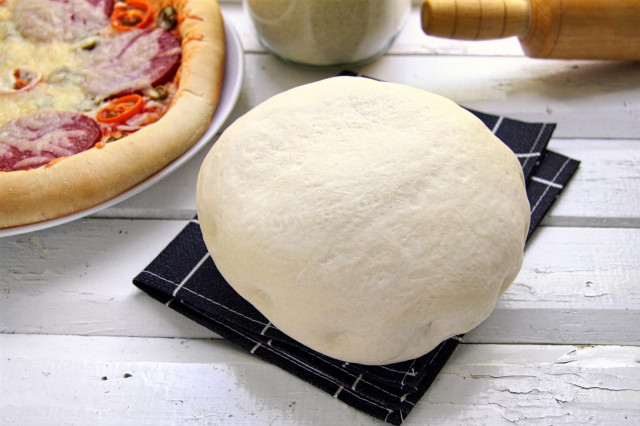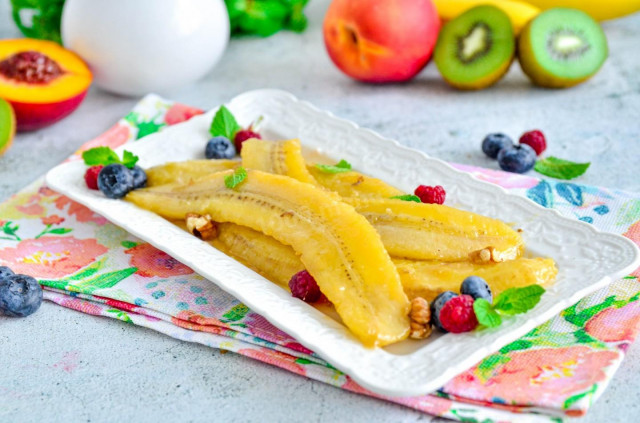Composition / ingredients
Step-by-step cooking
Step 1:
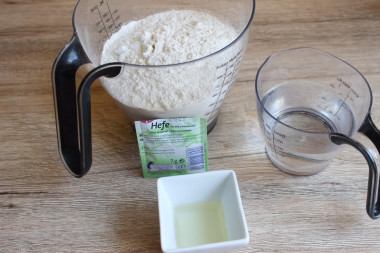
How to make lean yeast dough for pies? Prepare all the necessary ingredients. Sift the flour through a fine sieve to saturate it with oxygen. This will make the baking more lush and airy. Take flour of the highest grade, wheat.
Step 2:
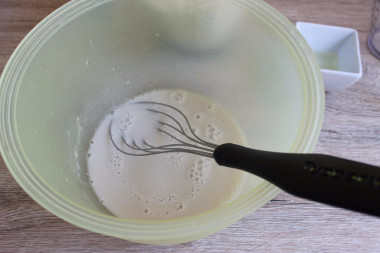
Pour the dry yeast into a bowl. Add a little warm water, stir. Let the yeast disperse — stand for about 5 minutes. Keep in mind that dry yeast produces different, so read the instructions on the package about how to use yours.
Step 3:
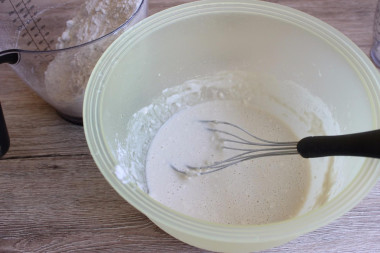
Add sugar, salt, vegetable oil to the yeast and mix. Use refined, odorless vegetable oil.
Step 4:
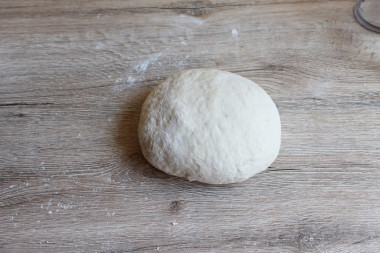
Gradually pour the sifted flour into the yeast mixture and knead the dough. Focus not on the amount of flour, but on the consistency of the dough. It should be moderately thick, but not steep, soft and not sticky. Transfer the dough to a bowl, cover with a towel and leave in a warm place without drafts for 1 hour. I usually put the bowl of dough in the oven turned off. It may take longer — it all depends on the activity of your yeast.
Step 5:
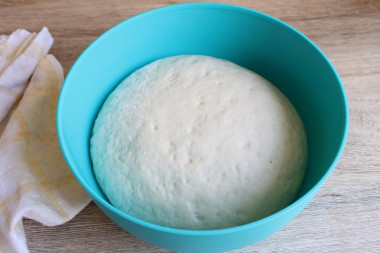
That's how I got it up after an hour. The dough is completely ready for use. It can be used to make pies for frying in a frying pan and baking in the oven. The filling can be any — sweet and unsweetened. Even products without filling, such as buns or tortillas, will be good.
Step 6:
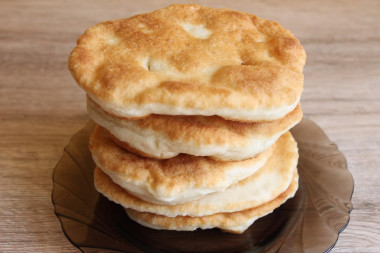
And I decided to make such cakes in a frying pan. They can be eaten with soup and just with tea. Enjoy your meal!
For cooking, it is better to use filtered or bottled water that is neutral to taste. If you use tap water, keep in mind that it can give the dish an unpleasant characteristic taste.
Be prepared for the fact that flour may need more or less than indicated in the recipe. Focus not on the amount of flour, but on the desired consistency of the dough. To avoid mistakes, read about flour and its properties!
The liquid in which yeast is bred should be pleasant to the touch, no higher than 40 degrees. Why is this important? In a warm environment, yeast is well activated, in a hot one it will die, and in a cold one it simply will not work. To avoid unpleasant surprises, check the yeast before mixing with the rest of the ingredients. Pour a little warm milk into a bowl, stir in the yeast. Cover the bowl with a kitchen towel and put it in a warm place without drafts for 10-15 minutes. During this time, a foam yeast cap should appear on the surface of the sponge. If this did not happen, then the fermentation process has not started (the yeast is overdue or spoiled). In this case, it is worth taking other yeast, otherwise baking will not work.
Caloric content of the products possible in the composition of the dish
- Whole durum wheat flour fortified - 333 kcal/100g
- Whole durum wheat flour universal - 364 kcal/100g
- Flour krupchatka - 348 kcal/100g
- Flour - 325 kcal/100g
- Granulated sugar - 398 kcal/100g
- Sugar - 398 kcal/100g
- Vegetable oil - 873 kcal/100g
- Salt - 0 kcal/100g
- Water - 0 kcal/100g
- Dry yeast - 410 kcal/100g

